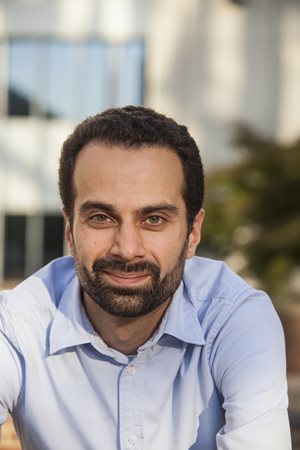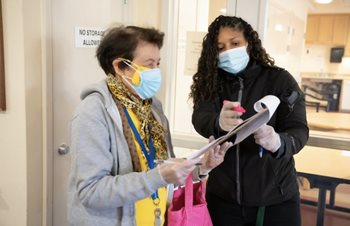In Missouri, a NeighborWorks network organization partners with a school district to improve educational outcomes for youth. Another network organization in California preserves cultural assets while combatting gentrification and displacement. In Ohio, they're collaborating with the healthcare sector to improve social determinants of health.
Across the NeighborWorks network, organizations are orienting their programs and partnerships to achieve positive change by serving the whole community. Today, this model is known in the field as "comprehensive community development," but NeighborWorks America has embraced a comprehensive approach since its inception. Nearly two thirds of NeighborWorks network organizations have already engaged in these efforts as part of an intentional approach aimed at improving lives and strengthening communities. Now, NeighborWorks is making comprehensive community development even more of a central focus, supporting the network's efforts with grants, coaches, training for development organizations and community leaders, and more. Comprehensive community development is also a big part of NeighborWorks' three-year strategic plan
through a goal to foster stronger, more equitable communities.

Paul Singh, NeighborWorks America's vice president, Community Initiatives
"We see comprehensive community development as being foundational to achieving NeighborWorks' vision that every community is a place of opportunity," explains Paul Singh, NeighborWorks America's vice president of Community Initiatives. "It advances a shared vision among nonprofits, anchor institutions, cross-sector partners, local government and – most of all – residents themselves."
The model also offers a promise to network organizations working toward equity and racial equity. "Often these efforts are aimed at addressing inequities and disparities," Singh shares. "By centering residents in the process, we ensure the people who are directly impacted are the ones making the decisions."
Today, NeighborWorks and many network organizations are considering how to refine or grow their comprehensive community development efforts. One reason? To help communities recover from the pandemic and become more resilient. The impact of the pandemic – which hit some communities harder than others – made clear the important role that place plays in shaping people's lives. Many network organizations established new partnerships to address inequitable access to food, healthcare and other critical services. Now, they're looking at how to sustain those efforts and increase their

Little Tokyo Service Center worked on plans for years for Terasaki Budokan, a community space.
impact.
"This is an intentional approach to improving the outcomes for a place," says Singh. "It seems daunting, but it's about having a solid plan and framework to guide how organizations work within communities."
However, the plan is not "one size fits all." Singh advises a tailored approach, based on the priorities of the residents and stakeholders who live there. Some examples of comprehensive community development tenets?
- The development approach is intentional and planned.
- It is community driven.
- It is data and equity driven.
- It has a guiding vision or plan.
- It requires partners to solve multiple complex challenges.
- It's "place based" or focused on a particular location.

Comprehensive community development is community driven.
"Place is really important," agrees Eileen Flanagan, chief innovator of Community Development Advisors, LLC. "Where people live impacts their lives in multiple and long-lasting ways." That includes job opportunities, health, educational opportunities and, of course, their homes. It comes back to intention. "Comprehensive community development requires consideration of the place itself and what's going to be different. Will the community look different? Will the way people connect with each other in that place be different? Will the home values be different? Will people feel safer?"
Jaime-Lee Bradshaw, chief strategy officer of Community Partners of South Florida (CPSFL), recommends that organizations wanting to delve deeper into comprehensive community development do so by taking stock of what they have and what they can provide – and what others can provide as well, underscoring the importance of partnerships.
"Communities want more than just what they need," explains Bradshaw. Systems, amenities, diversity and opportunities help create vibrant communities where people can thrive. And she believes nonprofits embedded in their communities know those communities best.
In her own community, CPSFL engaged residents in determining the solutions to issues they'd like resolved. One example is the Riviera Beach Health Initiative. This effort began when a local philanthropic board approached CPSFL to provide input on what Riviera Beach needed, Bradshaw says. As CPSFL played the role of facilitator, the nonprofit learned that residents wanted access to primary healthcare, an indicator of overall health and wellness.
Through that partnership with the residents, a city commission who donated the land, a federally qualified health clinic and more, this community will have a brick-and-mortar clinic in 2024 – and a Riviera Beach-based mobile clinic until that time.
"Comprehensive community development is about connecting to the urgent issues people face, day in and day out. It's about providing leadership to meet the pressing challenges of a community and being bold in setting out a vision for positive change," says Elizabeth Druback Celaya, director of Community Initiatives at NeighborWorks America. "When we work through the lens of comprehensive community development, we need to think: Why does this matter? Why is it important to the people in this place? As the work of CPSFL shows, comprehensive community development gives us a model for coming together to work in partnership on the issues that are most vital to communities."
Singh adds, "This has been a proven method in the community development field. The key is collaboration."
In the year ahead, NeighborWorks will examine some of the communities that have made changes using the comprehensive community development model.
If you're interested in learning more about how a comprehensive approach can help your community, NeighborWorks America offers training including: Comprehensive Community Development 101: Why It Matters. The upcoming Virtual Training Institute in February will feature comprehensive community development courses.

